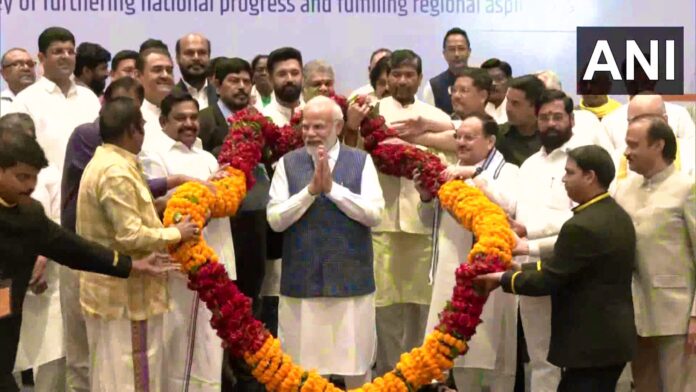Opposition parties in the Indian National Developmental Inclusive Alliance (INDIA) bloc have made a crucial move in reaction to the ongoing conflict in Manipur.
In response to the Manipur problem, the Congress and Bharat Rashtra Samithi (BRS) have filed notices of no-confidence motions in the Lok Sabha against PM Narendra Modi’s administration. The Speaker will soon make the debate date known once the proposal was approved.
While Nageshwar Rao, the leader of the BRS floor, sent a separate notice of a no-confidence motion to the Speaker, Gaurav Gogoi, the deputy leader of the Congress in the Lok Sabha, sent a notice to the office of the Lok Sabha Secretary General. Telangana Chief Minister Chandrashekar Rao is in charge of BRS.
The outcome of the no-confidence vote against the Modi administration would have a big impact on the political landscape of the nation as opposition parties prepare for it.
A no-confidence motion indicates that one or more parliamentarians are no longer supportive of the chosen administration.
The government must resign if it is approved, allowing the opposition to contest the majority and legitimacy of the current administration.
A no-confidence motion can be introduced by any Lok Sabha member with the support of at least 50 other MPs.
The motion must be made in writing, bear the signature of the member making it, and be delivered to the Lok Sabha Speaker on a sitting day.
Before 10 am, the member must submit a written notice of the motion; the Speaker will then read it aloud in the House.
The Speaker determines whether to allow a no-confidence motion for discussion and debate after it is made.
If accepted, the discussion day and time are chosen.
Within 10 days of the motion’s acceptance, a date must be set for it.
The motion is debated in the Lok Sabha, with the member who submitted it moving the motion. It is followed by a response from the government and an opportunity for the opposition parties to speak on it.
After the debate, the Lok Sabha votes on the motion, and it passes if supported by a majority of the members.
If the motion is passed, the government must resign. If the government wins the vote, the motion is defeated, and the government remains in power.
Since Independence, 27 no-confidence motions have been moved.
As history shows, most no-confidence motions have been defeated, with the exception of Prime Minister Morarji Desai’s resignation in July 1979, and the Atal Bihari Vajpayee government’s loss by one vote in 1999.
The member who proposed the motion moves it, and it is then discussed in the Lok Sabha. It is followed by a government response and a chance for the opposition parties to comment.
The Lok Sabha votes on the motion following the discussion, and if a majority of the members vote in favor, the motion is approved.
The government will have to resign if the motion is approved. The motion is defeated and the government remains in power if the government wins the vote.
There have been 27 no-confidence motions introduced since independence.
The majority of no-confidence votes have been defeated, according to history, with the exception of the resignation of Prime Minister Morarji Desai in July 1979 and the Atal Bihari Vajpayee administration’s loss by one vote in 1999.
The NDA administration led by Narendra Modi withstood the most recent motion against them in 2018 by 195 votes.
During her time as PM, Indira Gandhi faced the most motions (15).
It is predicted that the motion is likely to be defeated as the ruling party has a majority in the house.



